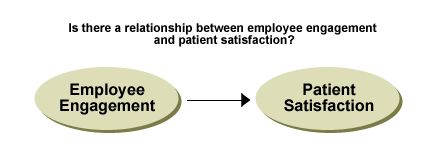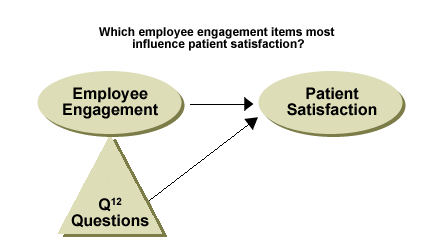First in a two-part series
Gallup's healthcare consulting model postulates that psychologically committed, or engaged, employees are the key to improving patient satisfaction and loyalty. But what do data from the hospitals tell us about the specific nature of the relationship -- that is, can the relationship between high employee engagement scores and high levels of patient satisfaction be illustrated over time? To answer this question, Gallup analyzed three years of inpatient satisfaction data (2001, 2002, and 2003) from a subset of hospitals for which survey data from employees and inpatients were available.

The analysis shows that there is a significant correlation over time between overall employee engagement (as measured by the GrandMean score for the 12 questions in Gallup's standardized employee engagement survey) and overall patient satisfaction (as measured by a single question asking patients to rate their satisfaction with their hospital experience). More specifically, employee engagement seems to influence patient satisfaction over time -- not vice versa -- implying that improving employee engagement can help hospitals improve patient satisfaction.
Key Employee Engagement Drivers of Patient Satisfaction
Employee engagement and patient satisfaction are largely outcomes of specific workplace conditions. To achieve improved patient satisfaction scores, hospitals must determine which of those conditions -- i.e., which items on the employee engagement survey -- are most crucial to the desired outcome of increased patient satisfaction.

Of the 12 core employee engagement items, five show a consistently strong relationship to inpatient satisfaction, meaning that hospitals with high scores on these items also tend to have high patient satisfaction scores. The five items are:
- I have the materials and equipment to do my job right.
- At work, I have the opportunity to do what I do best every day.
- The mission or purpose of my organization makes me feel my job is important.
- My associates or fellow employees are committed to doing quality work.
- This last year, I have had opportunities at work to learn and grow.
Copyright © 1992-1999 The Gallup Organization, Princeton, NJ. All rights reserved.
Closer examination of these five employee engagement items provides some simple answers to the question of how to improve patient satisfaction.
How Can These Findings Help Improve Patient Satisfaction?
Inpatient satisfaction is all about consistently delivering quality service to patients during every phase of their hospital experiences. Success in implementing processes -- such as placing employees in roles that best make use of their talents, and ensuring that they have the right tools to do their jobs -- can help hospital staffs to deliver quality service. The first two employee engagement items -- "I have the materials and equipment to do my job right" and "At work, I have the opportunity to do what I do best every day" -- measure employee satisfaction with these processes.
However, a quality improvement approach that focuses solely on processes does not guarantee success. Such an approach is missing a key component. Focusing on process may help give employees the tools they need to deliver quality patient care, but successful quality improvement also depends on a focus on people as well as process issues. It requires ensuring that employees have the motivation and commitment to deliver quality. The second two items -- "The mission or purpose of my organization makes me feel my job is important" and "My associates or fellow employees are committed to doing quality work" -- measure employee satisfaction with these "people" attributes.
When a healthcare organization scores higher on the "process" items than the "people" items, it probably means that the organization needs to improve its capability to motivate employees to deliver quality service. For organizations receiving higher scores on "people" items than "process" items, systems are probably presenting a barrier to quality service.
The final item -- "This last year, I have had opportunities at work to learn and grow" -- reflects an organization's ability to give employees opportunities for personal development, help employees stay abreast of the latest techniques and technology, and recognize employees for acquiring additional skill and knowledge sets. Successful healthcare organizations find ways to develop and recognize their best patient caregivers without promoting them out of the roles in which they excel.
Next week's article will explore how the individual employee engagement items impact specific aspects of the patient experience.